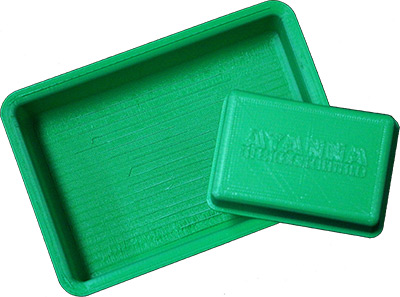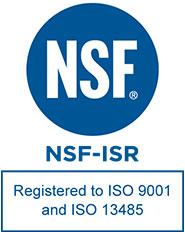Engineering
Prototyping
The goal of a prototype is to detect design flaws or other issues before the production of a part. This step typically saves time and money by allowing the engineering team and customer to work together to evaluate a part’s form, fit and function. Prototypes can help identify minor modifications that will improve the part or they can identify significant flaws that may not be apparent by simply reviewing drawings.
There are many options for prototyping on the market today. The most common are rapid prototyping and pre-production molds. The best option depends on your objective during this phase of engineering.
Rapid Prototyping
Rapid prototyping, commonly known as 3D printing, is an additive manufacturing process. The process starts with using the part design. The 3D printing machine uses the data from the model to lay down successive layers of material to build up the physical part in a series of cross sections. Each layer is joined together to create the final shape. The most common types of rapid prototyping are:
I.Selective Laser Sintering (SLS)
II.Stereolithography (SLA)
Stereolithography is an additive manufacturing technology used for producing models, prototypes, patterns, and production parts up one layer at a time by curing a photo-reactive resin with a UV laser or another similar power source .Stereolithograhy injection molding prototyping is ideal for checking part sizing, fit and function and for use as finished part looking marketing prototypes.
III.Fused Deposition Modeling (FDM)
Software slices and positions a 3D CAD file and calculates a path to extrude thermoplastic. The printer heats the thermoplastic to a semi-liquid state and deposits it in ultra-fine beads along the extrusion path which meld together. Fused Deposition Modeling is ideal for producing conceptual and engineering models and functional testing plastic injection molding prototypes.
Pre-Production Injection Molds
Based on the requirements of a project, a pre-production injection mold may be the next step after a rapid prototype or instead of a rapid prototype. A plastic injection molding prototype mold can be very important in the development of a new product, offering a fast, low cost tooling.
Prototype molds can be use for low volume plastic injection molding production.

Ayanna Plastics & Engineering injection molding prototype capabilities include:
- Rapid prototypes using the appropriate method for your objectives
- One cavity pull up in a multi-cavity base
- Master Unit Die (MUD) Inserts
- Single, multi or family cavity molds
- Short run molds




